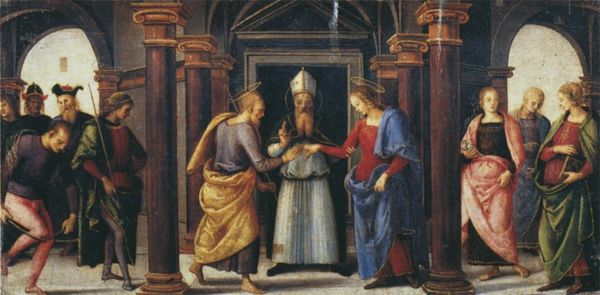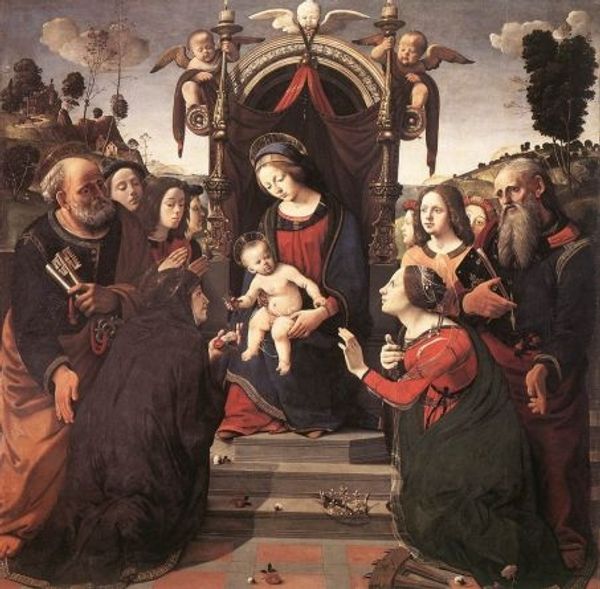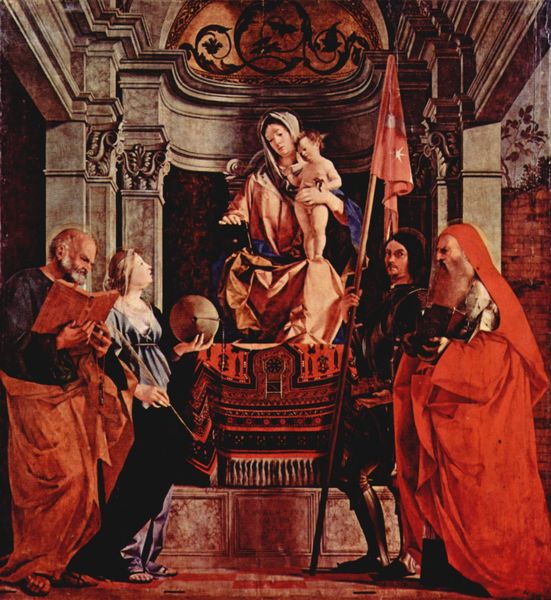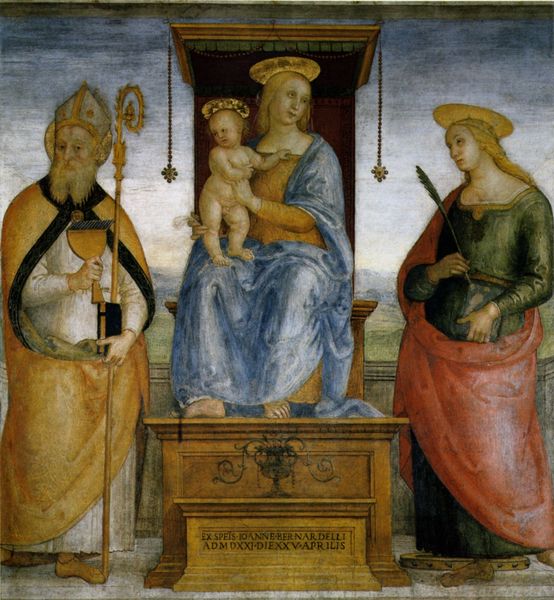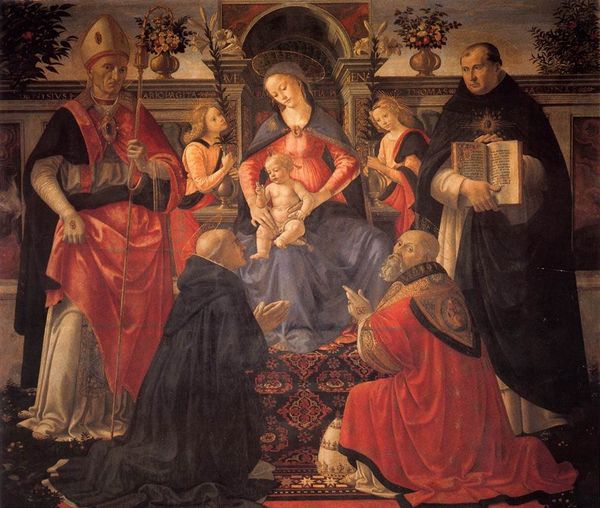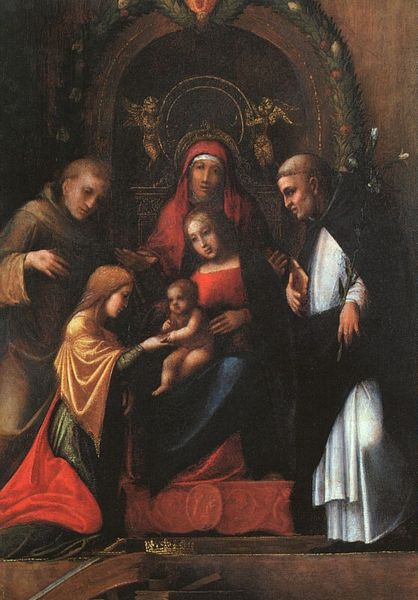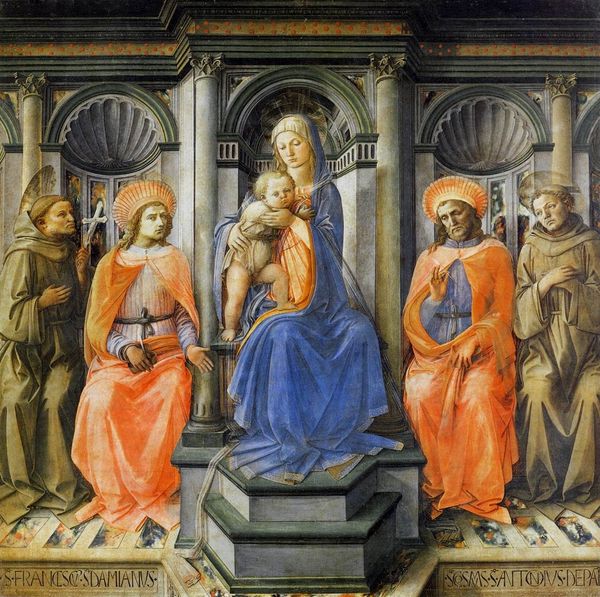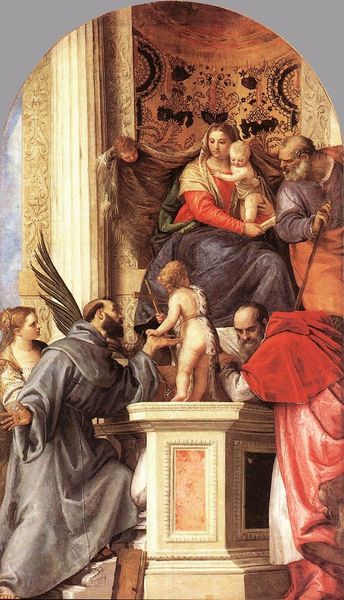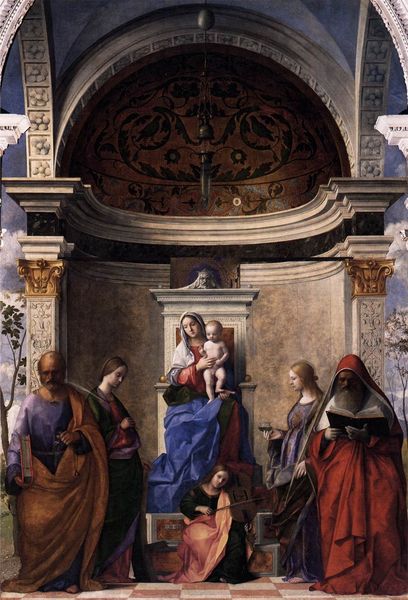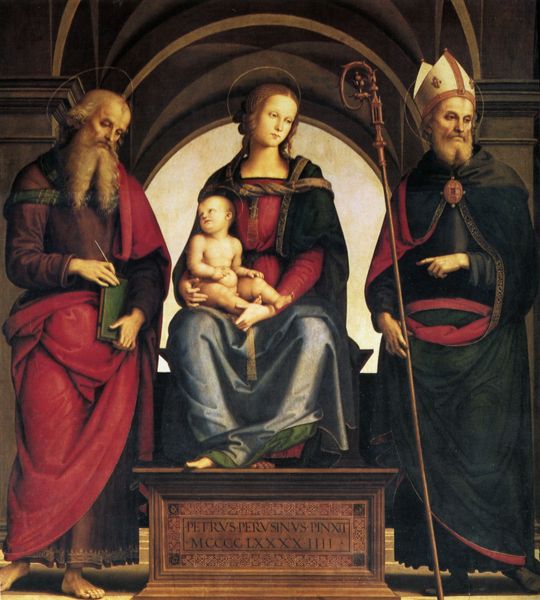
painting, oil-paint
#
portrait
#
high-renaissance
#
painting
#
oil-paint
#
perspective
#
figuration
#
oil painting
#
christianity
#
history-painting
#
italian-renaissance
Copyright: Public domain
Pietro Perugino painted "Pala di Fano (Presentation in the Temple)" during the Italian Renaissance, a period of renewed interest in classical antiquity. The painting depicts the presentation of Jesus in the Temple, a biblical event emphasizing ritual purification and obedience to religious law. Consider the representation of women here; Mary is central, yet her role is defined by motherhood and piety, reflecting the limited roles afforded to women in society at the time. The gaze of the other women suggests a mix of reverence and perhaps a recognition of their own societal expectations. Perugino’s composition places the figures within an idealized architectural space, symbolizing the order and harmony sought during the Renaissance. However, this harmony often masked social inequalities and power structures. The painting can be seen as a cultural artifact that both reinforces and reflects the complex intersections of gender, religion, and social status in Renaissance society. This depiction invites reflection on the experiences of women, and the tensions between personal faith and social expectation.
Comments
No comments
Be the first to comment and join the conversation on the ultimate creative platform.

